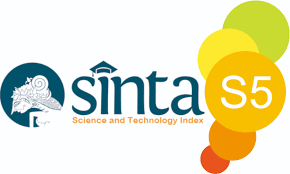Geographic Information System for Spatial Utilization Licensing of Tabalong Regency Based on Web and Mobile Applications
DOI:
https://doi.org/10.34010/injuratech.v4i1.13848Keywords:
Geographic Information System, GIS, Mobile, WebsiteAbstract
The management of spatial use permits aims to prevent negative impacts on the environment due to spatial use that is not in accordance with the regulations in the regional spatial plan. Currently, in Tabalong Regency, several violations of aaaaa aaa aaspatial use do not match its designation. In order to minimize the occurrence of violations of spatial planning, it is necessary to strengthen control over spatial use through the development of information systems. This study aims to adopt the use of information and communication technology for space utilization permits in the form of implementing the geographic information system concept using the web and mobile-based application media. This study used a qualitative approach through descriptive methods to explore the urgency of geographic information systems as an instrument of utilization control. The results of the study show that the information system application developed is a means for the community, business actors, investors who plan to submit applications related to space utilization permits. This research also produces information system products that can realize transparency of spatial information and control processes of space utilization that can minimize the potential for deviation from procedures and results of licenses issued.
References
[2] Akhdor, M. 2015. The Essence of Permit Function for Space Utilization of Spatial Planning in South Sulawesi. International Journal of Scientific & Technology Research, 4(02), pp 135-141
[3] Karismandani, F., Wijoyo, S., and Sekarmadji, A. 2018. Implementation of Permission Use of Space as an Instrument of Controlling the Space Utilization of High Control Zone of East Java. pp 853-858
[4] Triana, K. 2019. GIS Developments for Ecosystem-based Marine Spatial Planning and the Challenges Faced in Indonesia. ASEAN Journal on Science and Technology for Development, 36(3), pp. 113-118.
[5] De Wit, A., van den Brink, A., Bregt, A. K., and van de Velde, R. 2009. Spatial planning and geo-ICT: How spatial planners invented GIS and are still learning how to use it. In Geospatial Technology and the Role of Location in Science, pp. 163-185. Springer, Dordrecht.
[6] Baldwin, K., and Mahon, R. 2014. A participatory GIS for marine spatial planning in the Grenadine Islands. The Electronic Journal of Information Systems in Developing Countries, 63(1), pp. 1-18.
[7] Sugiyono. 2010. Metode Penelitian Kuantitatif, Kualitatif, R&D (Bandung: Alfabeta)
[8] Pressman, R. S., and Maxim, B. 2014. Software Engineering: A Practitioner’s Approach, 8th Ed (New York: McGraw-Hill)
[9] Kendall, K. E., and Kendall, J. E. 2013. Systems Analysis and Design, 9th ed (New Jersey: Pearson Prentice Hall)
[10] Walters, E. 2019. Using UML Activities to model Business Processes: A Handbook for Practitioners (Handbooks for Modeling the Enterprise 1) (New York: Independently Published)
[11] Firdaus, M. S. A., and Djaja, K. 2017. Mobile Apps as Government Communication Media in Urban Public Services: Case Study–The Usage of Qlue Application by Jakarta Provincial Government. WIT Transactions on Ecology and the Environment, 210, pp. 417-430.











